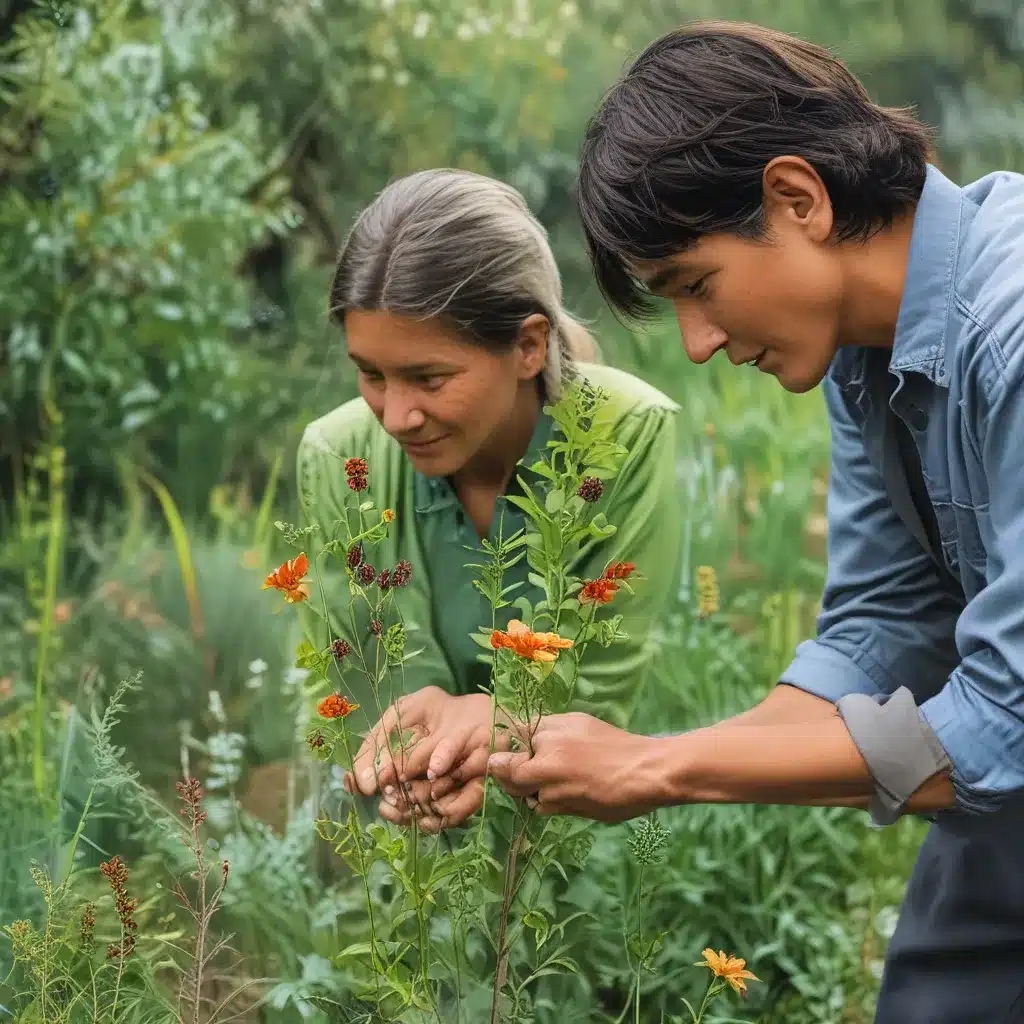The Joys of a Diverse Garden
As a passionate gardener, I’ve always been drawn to the beauty and ecological benefits of native plants. But I’ll admit, there was a time when I thought I had to choose between native plants and the delicious fruits and vegetables I loved growing. That is, until I discovered the joys of mixing the two.
You see, I used to be one of those purists who believed that a truly sustainable garden had to be 100% native. I’d turn my nose up at any non-native plants, convinced they were nothing but trouble. But then I started learning more about the complex relationships between plants, pollinators, and other wildlife. And I realized that a garden doesn’t have to be an all-or-nothing proposition.
Finding the Right Balance
As one gardening expert explained, “Having a garden that is alive with pollinators, birds, and other living things is part of the enjoyment. I believe that native plants – many of which are quite beautiful – have an important role to play in this. Yet the goal of a sustainable living landscape does not mean we have to remove all of our non-native plants and replace them with natives.”
That really resonated with me. I started to see how I could create a vibrant, diverse garden that included both native and non-native plants. The key, it turns out, is finding the right balance.
Embracing the Beauty of Native Plants
Now, don’t get me wrong – I still have a deep love and appreciation for native plants. In fact, I’ve found that many of them are absolutely stunning, and they bring so much life and energy to my garden. Take the purple coneflower, for example. Its bold, bright blooms are a magnet for pollinators, and it adds such a wonderful pop of color to my flower beds.
And then there are the grasses – oh, the grasses! I’ve discovered the beauty of native species like little bluestem and switchgrass, which not only provide visual interest but also create important habitat for all sorts of critters. Plus, they’re incredibly drought-tolerant, which is a major plus in my neck of the woods here in Temecula, California.
Integrating Food Crops
But as much as I love my native plants, I also have a deep appreciation for the joy of growing my own food. And that’s where the real fun begins – finding ways to integrate those delicious edibles into my garden in a way that complements the native species.
It turns out, there are all sorts of creative ways to do this. I’ve discovered the joys of planting native wildflowers like cosmos and zinnias alongside my vegetable beds, creating a riot of color and texture that’s both beautiful and functional. The pollinators love it, and I get to enjoy the fruits of my labor (literally and figuratively).
Embracing the Non-Natives
And while I’m still cautious about introducing non-native plants, I’ve learned that not all of them are inherently bad. In fact, many non-invasive garden cultivars can actually provide valuable ecological services. It’s all about doing your research and making informed choices.
For example, I’ve had great success with non-native annuals like sunflowers and marigolds, which not only look stunning but also attract all sorts of beneficial insects. And when it comes to my vegetable crops, I’ve found that certain non-native varieties can be just as productive and disease-resistant as their native counterparts.
A Vibrant, Balanced Ecosystem
At the end of the day, my garden is a reflection of my own personal journey as a gardener. It’s a place where I’ve learned to embrace the beauty and diversity of both native and non-native plants, and to find creative ways to integrate them into a cohesive, thriving ecosystem.
And you know what? I wouldn’t have it any other way. Because when I step out into my garden, I’m surrounded by a riot of color, a symphony of buzzing and chirping, and the sweet, satisfying bounty of my own homegrown produce. It’s a true feast for the senses, and a testament to the power of embracing the natural world, one plant at a time.
So if you’re a fellow gardener here in Temecula, or anywhere else for that matter, I encourage you to A1 Landscape Construction and explore the joys of mixing native plants with your food crops. It’s a journey that’s sure to be full of surprises, delights, and, of course, delicious harvests. Happy gardening!




